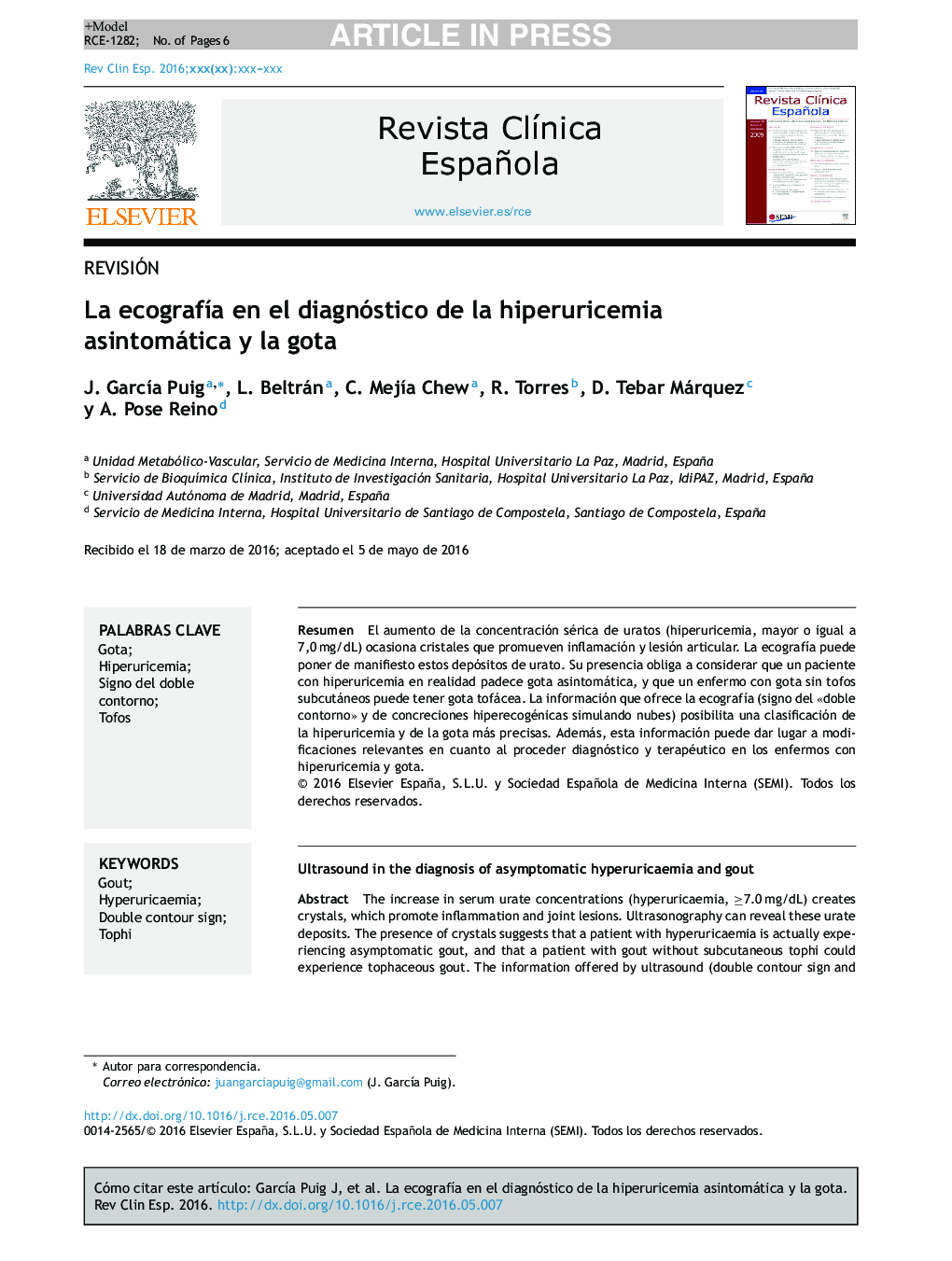| Article ID | Journal | Published Year | Pages | File Type |
|---|---|---|---|---|
| 5683553 | Revista Clínica Española | 2016 | 6 Pages |
Abstract
The increase in serum urate concentrations (hyperuricaemia, â¥7.0 mg/dL) creates crystals, which promote inflammation and joint lesions. Ultrasonography can reveal these urate deposits. The presence of crystals suggests that a patient with hyperuricaemia is actually experiencing asymptomatic gout, and that a patient with gout without subcutaneous tophi could experience tophaceous gout. The information offered by ultrasound (double contour sign and hyperechoic concretions mimicking clouds) enables a more specific classification of hyperuricaemia and gout. Additionally, this information can lead to relevant changes in terms of the diagnosis and therapeutic approach for patients with hyperuricaemia and gout.
Related Topics
Health Sciences
Medicine and Dentistry
Medicine and Dentistry (General)
Authors
J. GarcÃa Puig, L. Beltrán, C. MejÃa Chew, R. Torres, D. Tebar Márquez, A. Pose Reino,
